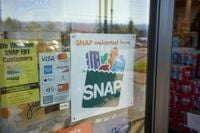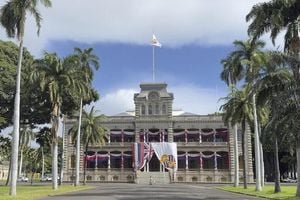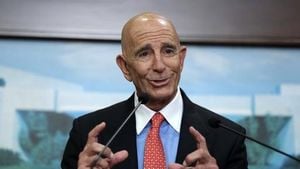On a sweltering August morning in Montgomery, Alabama, the steps of the Frank M. Johnson Federal Courthouse became the unlikely stage for a mock funeral. Cardboard caskets—one large, one small—were carried by civil rights groups and faith leaders in a somber procession. Their message was unmistakable: the new federal budget, passed in July 2025 and dubbed the "One Big Beautiful Bill" (OBBB) Act, spells a death sentence for millions relying on health and hunger programs.
“Beloved, today we stand not only in protest, but in mourning,” declared Rev. Valtoria Jackson, lead organizer for the Alabama Poor People’s Campaign, as the group prepared to march into the courthouse seeking a meeting with U.S. Senator Tommy Tuberville, a supporter of the bill. The protest was just one of several erupting across Alabama, targeting congressional offices of those who voted for the legislation. “We are gathered as if at a funeral for the millions of lives that the so-called ‘One Big Beautiful Bill,’ that passed in July 2025, has placed under a death sentence,” Jackson continued, her words echoing the deep anxiety felt by many in the crowd.
The bill’s reach is vast, but its sharpest cuts strike at the heart of two critical lifelines: Medicaid and the Supplemental Nutrition Assistance Program (SNAP), formerly known as food stamps. According to the National League of Cities (NLC), the Congressional Budget Office projects that the OBBB will slash $279 billion from SNAP over the next decade. This move threatens to destabilize not just individual families, but also the local economies that rely on the purchasing power SNAP brings.
“We are hoping that Tommy Tuberville somewhere, somehow, will get the message as to how many people, here in this state, is going to be hurt, who might die, because of the bill he voted to pass to take away health care and to take away SNAP benefits from people,” said Rev. Carolyn Foster, another leader of Alabama’s Poor People’s Campaign. The pain, they warned, would be felt most acutely by children and those already living on the edge of poverty.
For states like Alabama, the bill’s provisions are particularly punishing. Subsidies provided under the Affordable Care Act for those purchasing insurance on the exchange will expire at the end of 2025. At the same time, the OBBB shifts a greater share of SNAP’s administrative costs to states. Beginning October 2026, states must shoulder 75% of SNAP’s administrative expenses. And starting in October 2027, states with payment error rates above 6%—like Alabama, which currently stands at 7%—will be required to contribute even more, or face penalties. This financial squeeze is expected to force tough choices: either cut benefits, reduce eligibility, or find millions in new funding.
But the changes don’t stop at funding. The OBBB expands work requirements for SNAP recipients, a move the Urban Institute estimates will cause 2.7 million families—some 5.4 million individuals—to lose some or all of their monthly benefits, with the average family losing $254 per month. Able-bodied adults without dependents must now complete 80 hours of work or community service each month. Even caregivers with children aged 14 and older are swept into these requirements. Exemptions for veterans, former foster youth, and people experiencing homelessness have been scrapped, and the eligibility age for work requirements has been raised from 54 to 64. States’ ability to waive these requirements has also been sharply curtailed.
The eligibility net tightens further: refugees and asylees who haven’t obtained lawful permanent resident status are now excluded from SNAP. Updates to the Thrifty Food Plan, which determines benefit levels, will be limited—meaning SNAP benefits may not keep pace with rising food costs. And the Standard Utility Allowance, a deduction that has made applying for SNAP simpler for many households, now faces new restrictions, particularly for those on the Low-Income Home Energy Assistance Program. Disabled individuals and veterans are exempt from this change, but the cost of basic internet service will no longer be considered in SNAP applications.
For cities and towns across America, the ripple effects are already being felt. The NLC’s national scan found that 67% of municipalities have run food benefit awareness programs for over a decade. Yet, as federal support dries up, local governments will become the first line of defense when residents lose access to SNAP and look to local resources to fill the gap. “Cities, towns and villages, regardless of size, have been playing an essential role in supporting resident awareness of and access to federal and state benefit programs,” the NLC noted.
The cutbacks threaten not just families, but also local economies. The National Grocers Association projects a 6.7% drop in grocery sales over the next six months due to SNAP reductions, with the impact expected to grow. This could force some food retailers to close, further limiting access to healthy food options in underserved areas. The Community Eligibility Provision, which allows schools to provide free meals to all students, is also at risk, potentially jeopardizing school nutrition programs.
Meanwhile, the OBBB eliminates funding for SNAP-Ed, the federal nutrition education program, starting October 2025. SNAP-Ed has supported nutrition and physical education for low-resource communities, with South Carolina’s program alone reaching over 13,500 residents in 2024. “SNAP is designed to prevent food insecurity,” said Danielle Krobath, an assistant professor at the University of South Carolina’s Arnold School of Public Health. “It is an anti-poverty program, and one of the main benefits of the program is that it allows people choice in what they’re buying.”
Yet, even as SNAP shrinks, a new wave of restrictions is rolling in. In 2025, South Carolina joined 11 Republican-led states and one Democrat-led state in seeking to ban “junk food”—like soda and candy—from SNAP purchases, as part of the “Make America Healthy Again” (MAHA) agenda championed by U.S. Health and Human Services Secretary Robert F. Kennedy Jr. With support from the Trump administration, the USDA began approving waivers in May 2025 to allow such restrictions, set to take effect in 2026. South Carolina Governor Henry McMaster has signaled his intent to issue an executive order, though details on the exact foods to be restricted remain unclear. Over 567,000 South Carolinians could be affected.
Some experts are skeptical. “In general, I don’t find this kind of program, restrictions on the list of foods that people can purchase, as an effective tool if what we want to change is what people consume,” said Orgul Ozturk, economics department head at the University of South Carolina. Both Ozturk and Krobath argue that incentives for healthy food purchases—like the Healthy Bucks program, which discounts fruits and vegetables for SNAP users—are more effective than outright bans.
With the federal government pulling back, cities are being urged to map out nutrition services, engage with residents and grocers, and expand local food access programs. The NLC recommends connecting with food retailers to assess the impact of SNAP changes, supporting farmers’ markets and mobile vendors, and expanding volunteer opportunities to satisfy new work requirements. As the OBBB takes root, the burden of managing hunger and nutrition is shifting rapidly from the federal government to states and cities—and, ultimately, to the families who rely on these lifelines.
In the shadow of the courthouse in Montgomery, the cardboard caskets were a stark reminder: behind every policy change are real lives, real families, and real consequences. Whether the message reaches those in power—and what comes next for the nation’s most vulnerable—remains to be seen.




